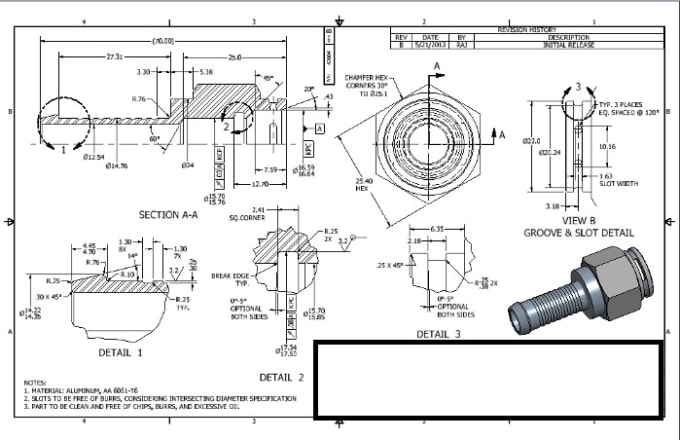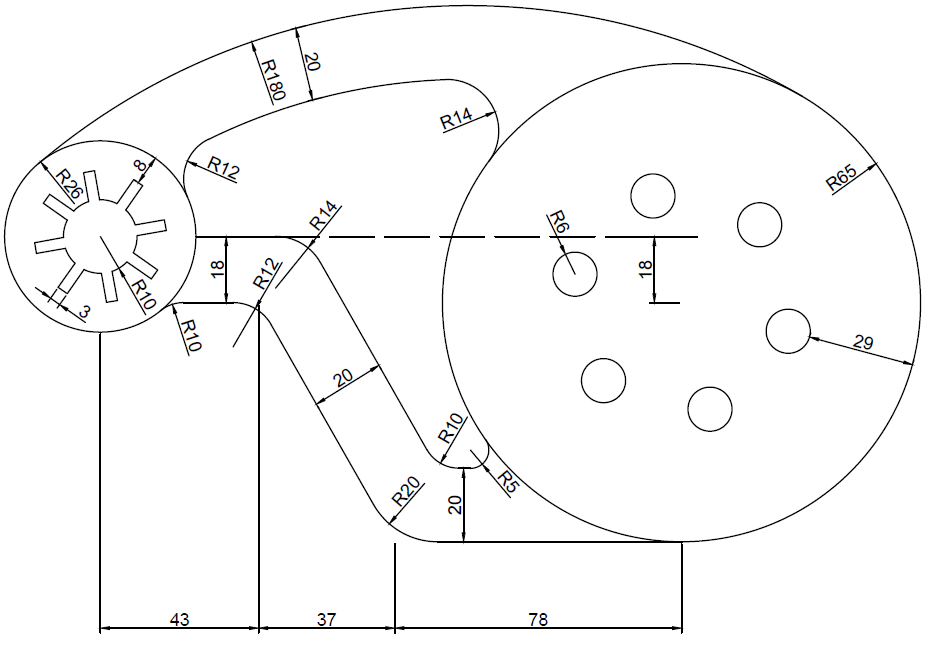Services
2D Drafting
2D Drafting
2D Drafting is the creation of accurate representations of objects for manufacturing and engineering needs. It is used to fully and clearly define requirements for concepts or products to convey all the required information that will allow a manufacturer to produce that component.
Today, the mechanics of the drafting task have largely been automated and accelerated through the use of Computer-Aided-Design systems (CAD).
2D CAD systems such as AutoCAD or MicroStation replace the paper drawing discipline. The lines, circles, arcs, and curves are created within the software. It is down to the technical drawing skill of the user to produce the drawing.
A 2D CAD system is an electronic drawing board. Its greatest strength over direct to paper technical drawing is in the making of revisions. Whereas in a conventional hand-drawn technical drawing, if a mistake is found, or a modification is required, a new drawing must be made from scratch, the 2D CAD system allows a copy of the original to be modified, saving considerable time. 2D CAD systems can be used to create plans for large projects such as buildings and aircraft but provide no way to check the various components will fit together.


Even though the greater proportion of all design works these days are carried in the 3D format, 2D drafting continues its legacy as the most viable option to share information about an assembly or design. With 2D drafting, distributing or sharing a collection of drawings within the entire project team becomes immensely easier.
Mechanical 2D drafting includes multidimensional operations such as structural drawing from a number of abstract sketches, assembly drawing, digitization of a master drawing, piping diagrams, fabrication drawings, and so on. While developing any mechanical component, the most obvious first step is to come up with the initial drafting sheet in a standardized format that can be comprehended by virtually anyone involved in the manufacturing process.
CAD drafting allows the designers to make the best out of 2D legacy data. They can draw full-scale diagrams with absolute freedom and without having to focus on scaling the design now and then. The individual diagrams can be presented with multiple viewports, thus ensuring that they represent multiple areas of the design without requiring any additional effort. Apart from that, CAD drafting makes parametric drawing layouts as easy as a walk in the park.
With 2D drafting, the operational team responsible for a project can concentrate on the decision-making processes while the CAD software automates all the essential steps including analysis, fabrication/engineering design, modeling, interference monitor, simulation, and so on. Also, CAD drafting provides the luxury of maintaining real-time surveillance over the operational limitations of the design (if any) and to immediately execute suitable alterations to overcome any inefficiency found.
2D CAD drafting and engineering services are essential, especially to understand every detail about the design. 2D drawings say everything you need to know about the design and manufacturing details such as fits and tolerances required, allowing manufacturers to collaborate with their supply chain partners.
Drafting is a language of precision and standardization, free from ambiguity. Drafting lets you communicate efficiently. Using common standards and processes, you and your 3D-using colleagues can work synergistically and productively.
Looking at the advantages first, because the advantages outweigh the disadvantages when it comes to using 2D CAD. The first advantage is the amount of time you can save. Up until this type of software was introduced a number of years ago, the only way to give a detailed drawing was to do it by hand. This saw architects wasting hours of their day drawing one home, rubbing out mistakes, sometimes having to start from scratch. This left one original drawing which was used time and time again by the owners, builders, and more with poor quality photocopies made which needed to be relied on to give a building that was structurally sound and stable moving forward. Now the drawing takes a few hours, making changes are quick and easy and it saves time in the long run.
The next advantage to bear in mind is that with 2D CAD a company can produce a product in a fraction of the time. From the first design concept through to see the product on the shelf takes a fraction of time compared to when it was drawn by hand and then produced, only to find mistakes and having to start again.
As you can imagine with a software solution costly mistakes are avoided, as the drawing is detailed and to the point, eliminating any guesswork and ensuring that each step of the process is correct before you go ahead. This saves time and money in the long run.
In addition to this, you will find that using a 2D CAD will help reduce manufacturing times. This is because the drawing has given detailed instructions on what is needed and has already ensured that the product works properly. This means that you know what you need before manufacturing begins, enabling you to get the product on the shelf quickly and effectively.
You get to see your concept before it is made or built, this helps you make sure you have everything correct before you start, ensuring that the process runs smoothly. In addition to that, you find that with 2D CAD, your drawings are of high quality, it is more professionals when showcasing the designs to your clients.
Finally, the advantage of this software is that you can make changes and apply new ideas with ease without having to start from scratch. Another time-saving option.
At Maxellences Engineering Technologies we provide you with 2D Drafting services which are carried out by a team of professionals who have a good understanding and experience of product design and manufacturing process.
